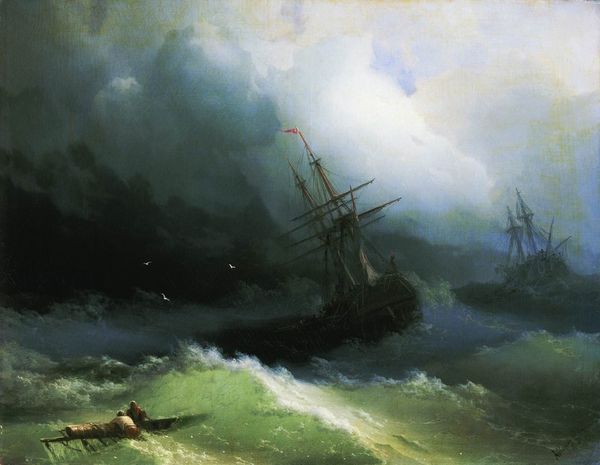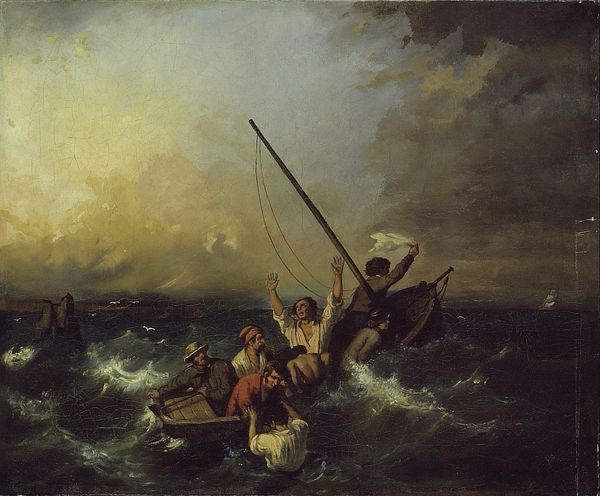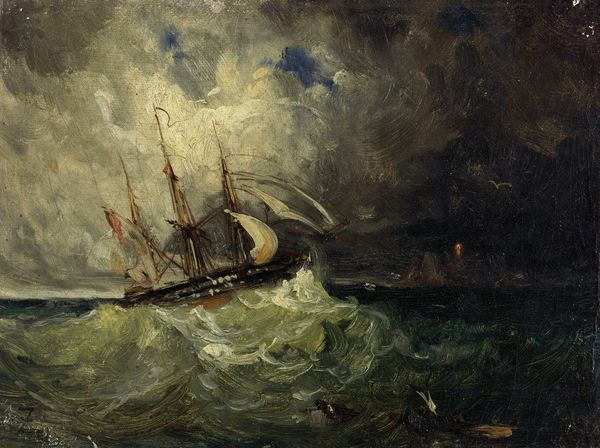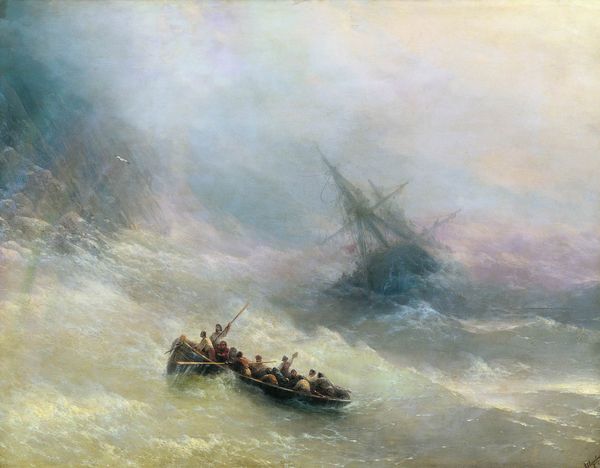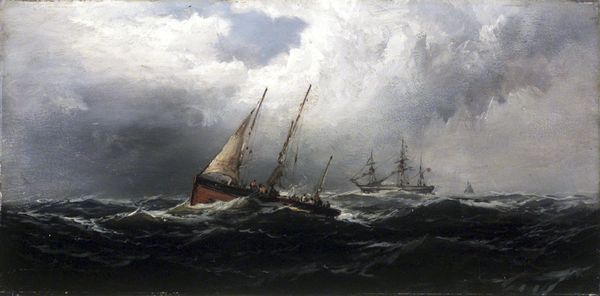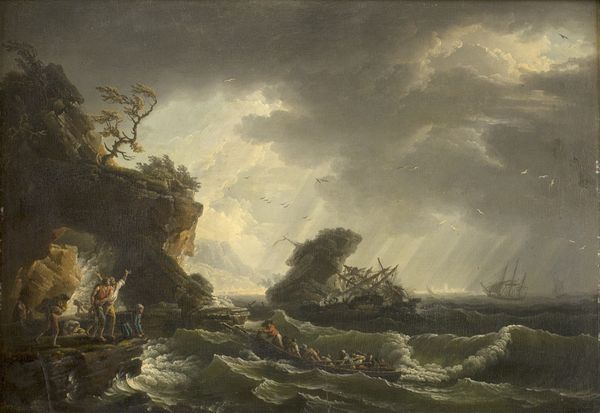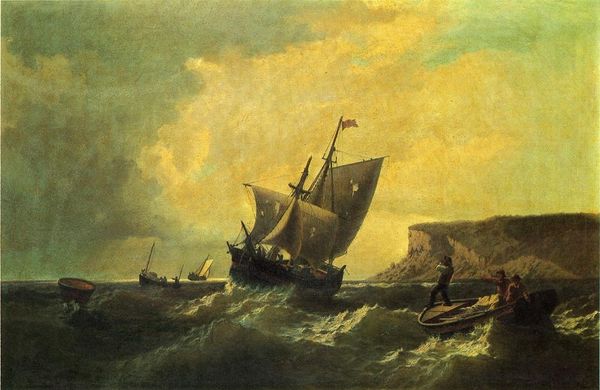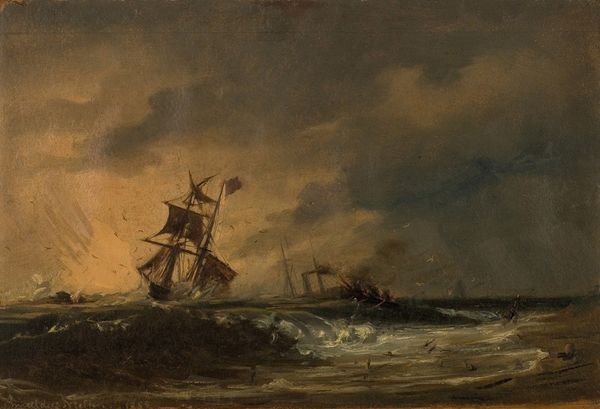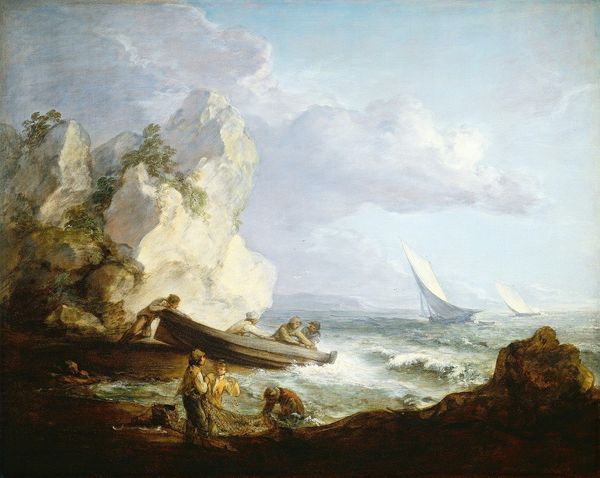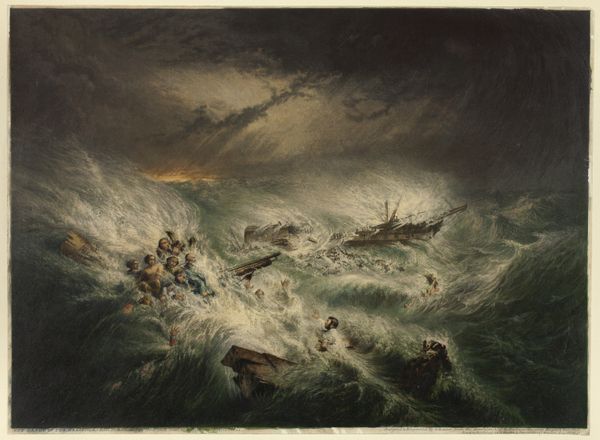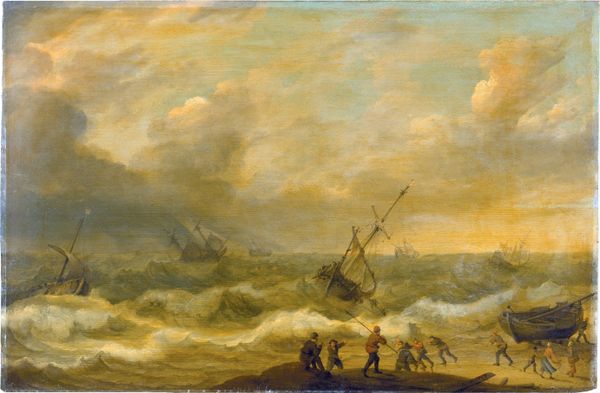
#
abstract painting
#
landscape
#
possibly oil pastel
#
handmade artwork painting
#
oil painting
#
fluid art
#
acrylic on canvas
#
underpainting
#
painting painterly
#
watercolour illustration
#
watercolor
Copyright: Public Domain: Artvee
Curator: This is "A Shipwreck" by Claude-Joseph Vernet. The exact date is not confirmed. What's your initial take? Editor: Chaotic! I'm immediately drawn to the churn of the water and how it seems to overwhelm the figures clinging to what’s left of their vessel. You can almost feel the salt spray. Curator: Absolutely. Vernet, a master of maritime painting, situates the viewer in a precarious moment of crisis. We can delve into this through the lens of disaster studies. Consider the socio-economic vulnerabilities that make certain populations more susceptible to maritime disasters, for example. Who were these sailors? What were the material conditions that led them to this moment? Editor: A crucial consideration. The painting technique emphasizes the violence of the natural world. I'm noticing the rough impasto of the waves and the thick layering of paint that creates a tangible sense of texture and the energy being used. How does Vernet use his materials to evoke this chaos? Curator: Indeed, and what ideologies are perpetuated through that depiction? The sublime aesthetic prevalent at the time can arguably obfuscate the grim realities of maritime labor. Editor: Agreed. The painting glorifies nature's power at the expense of acknowledging human struggle against it. It presents the storm as inevitable, naturalizing processes which impact working class people most. Curator: It asks us to question how disasters and who is affected can reinforce societal stratification and injustices that existed prior to disaster. Vernet prompts us to explore agency within systemic constraints, while creating visual drama. Editor: Understanding that dynamic tension is important, as the materiality and execution amplify its impact, allowing a nuanced examination of human perseverance versus overwhelming power structures. Curator: A dialectical consideration of labor and societal dynamics, framed with aesthetic engagement, seems to give us insight into this intense landscape. Editor: The interplay between creation and destruction, nature and human will, remains a powerful statement on the state of maritime industry in the eighteenth century.
Comments
No comments
Be the first to comment and join the conversation on the ultimate creative platform.

